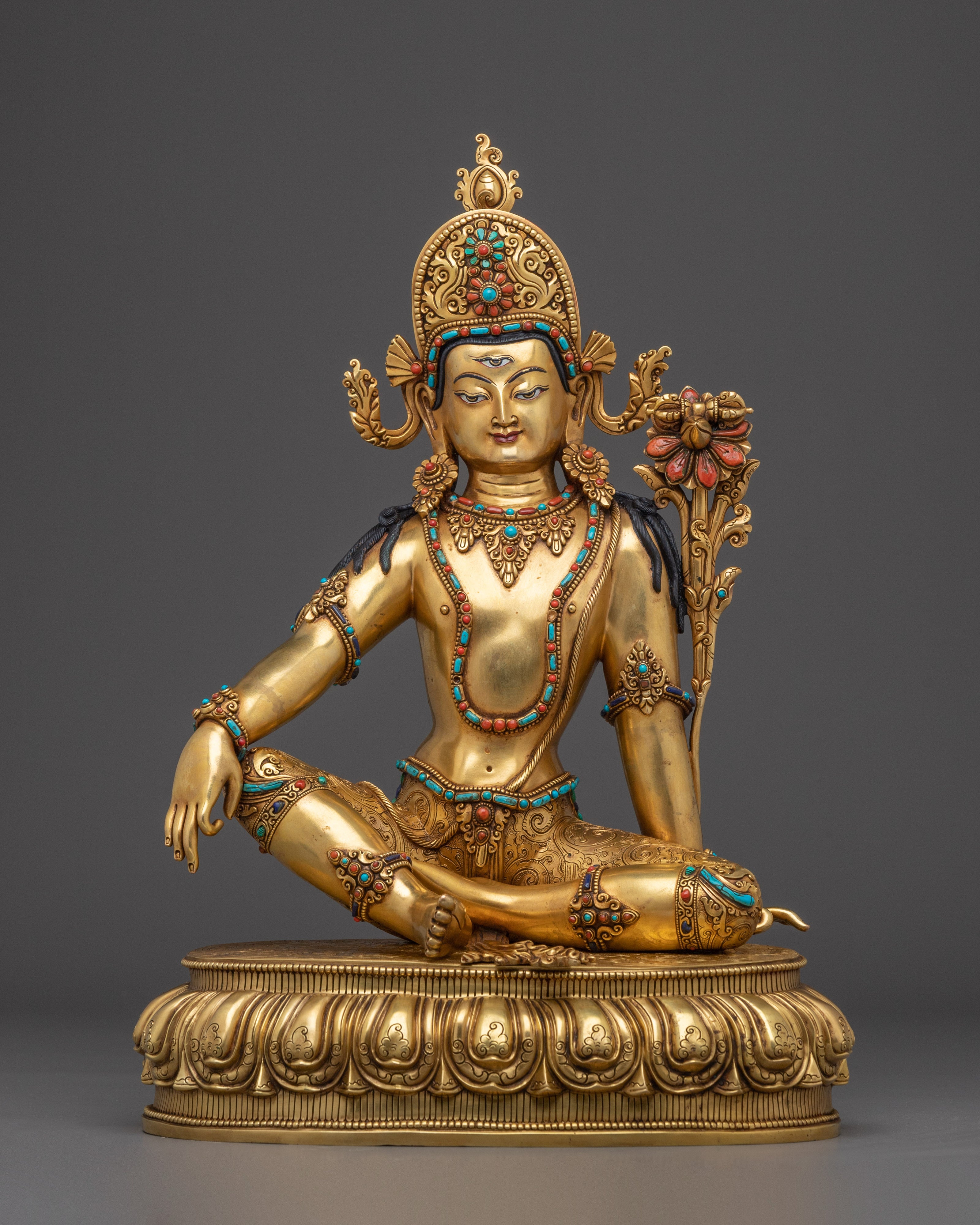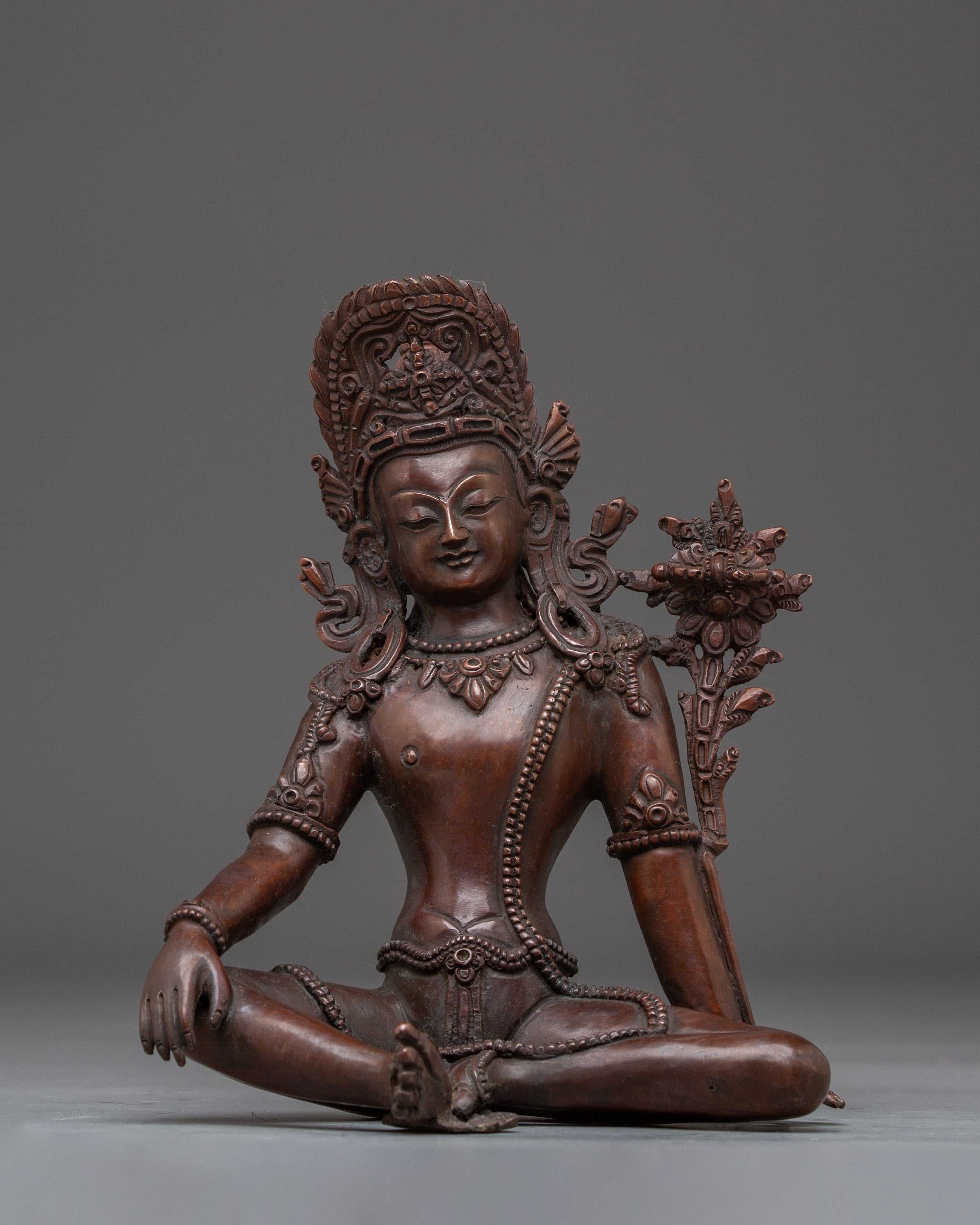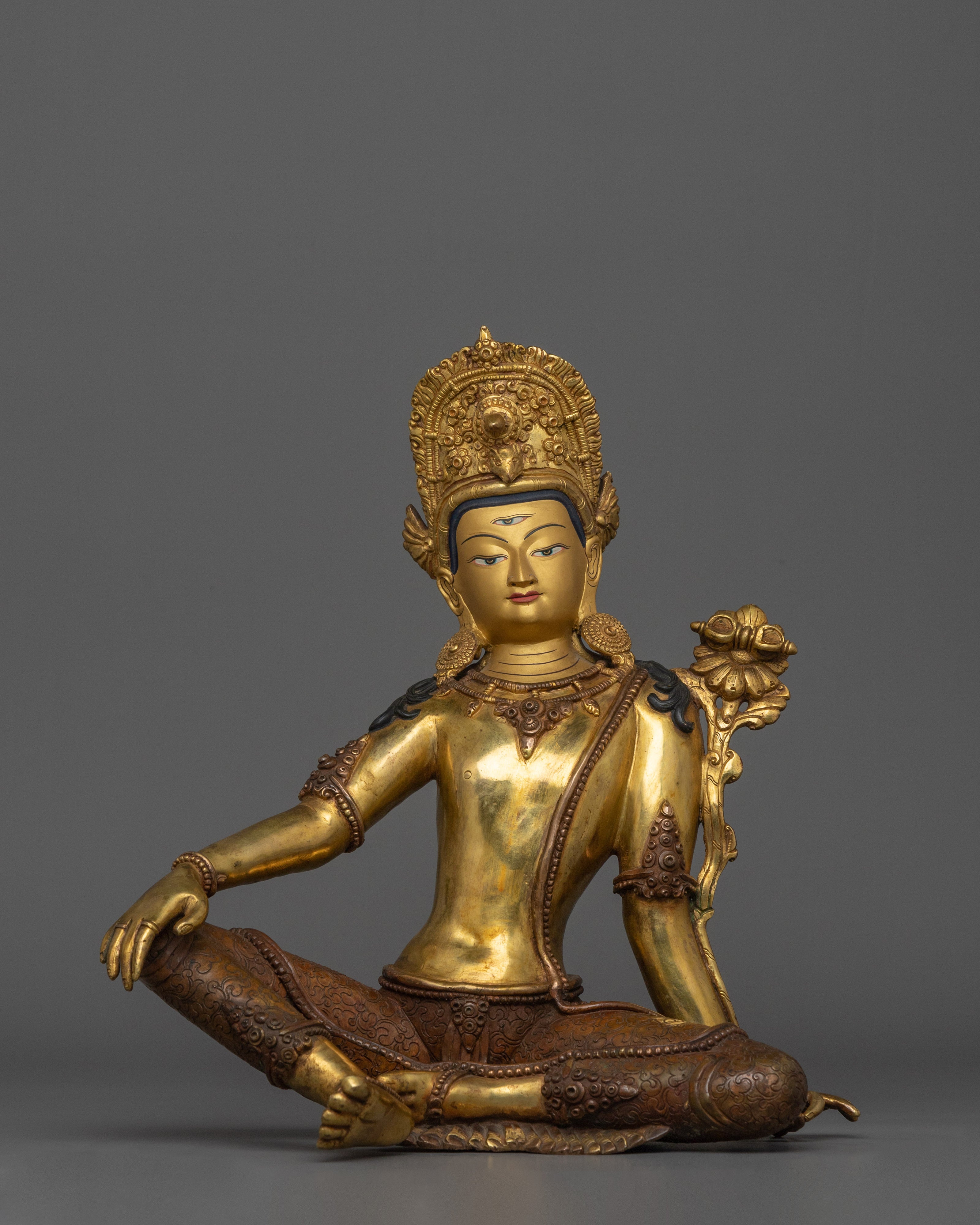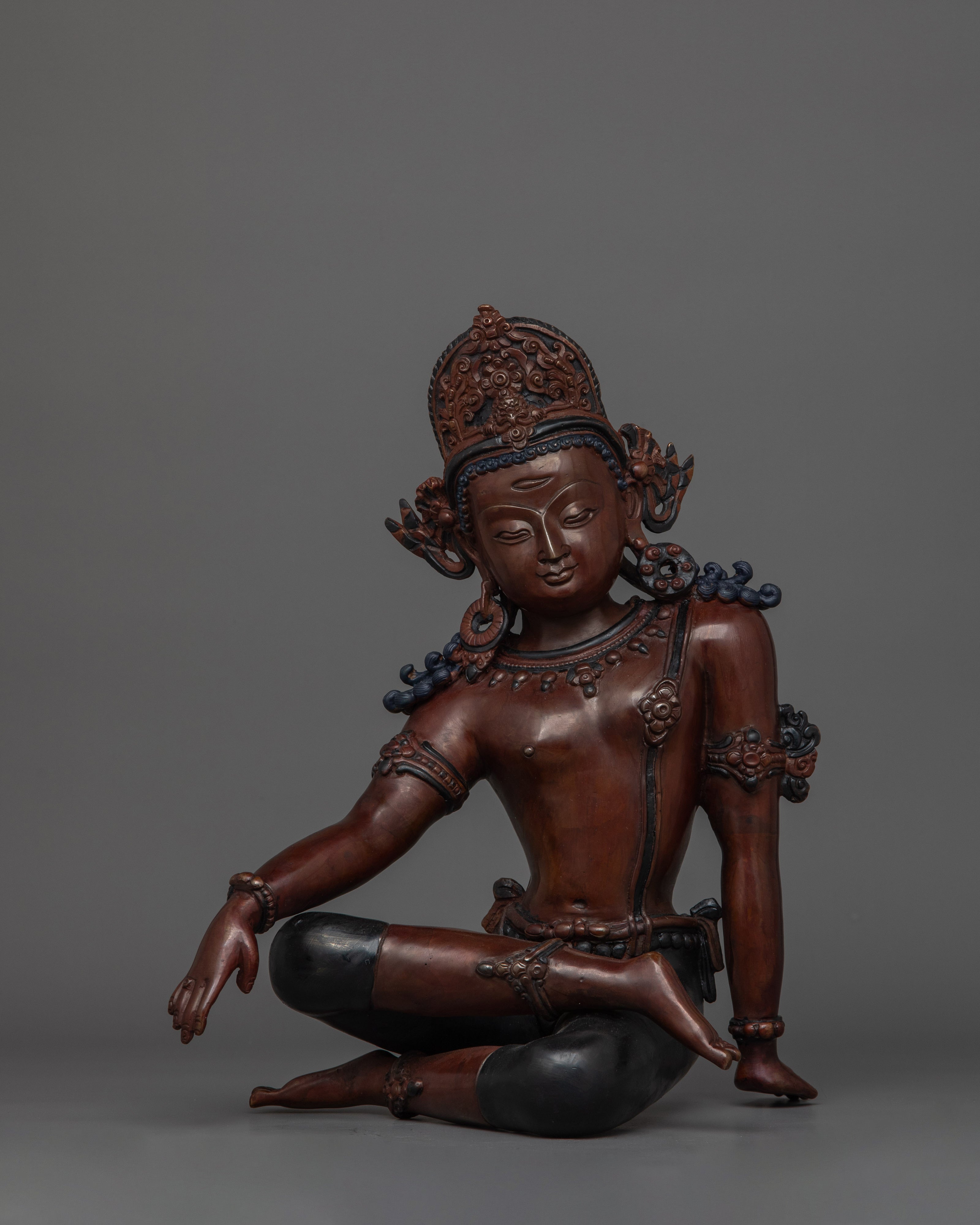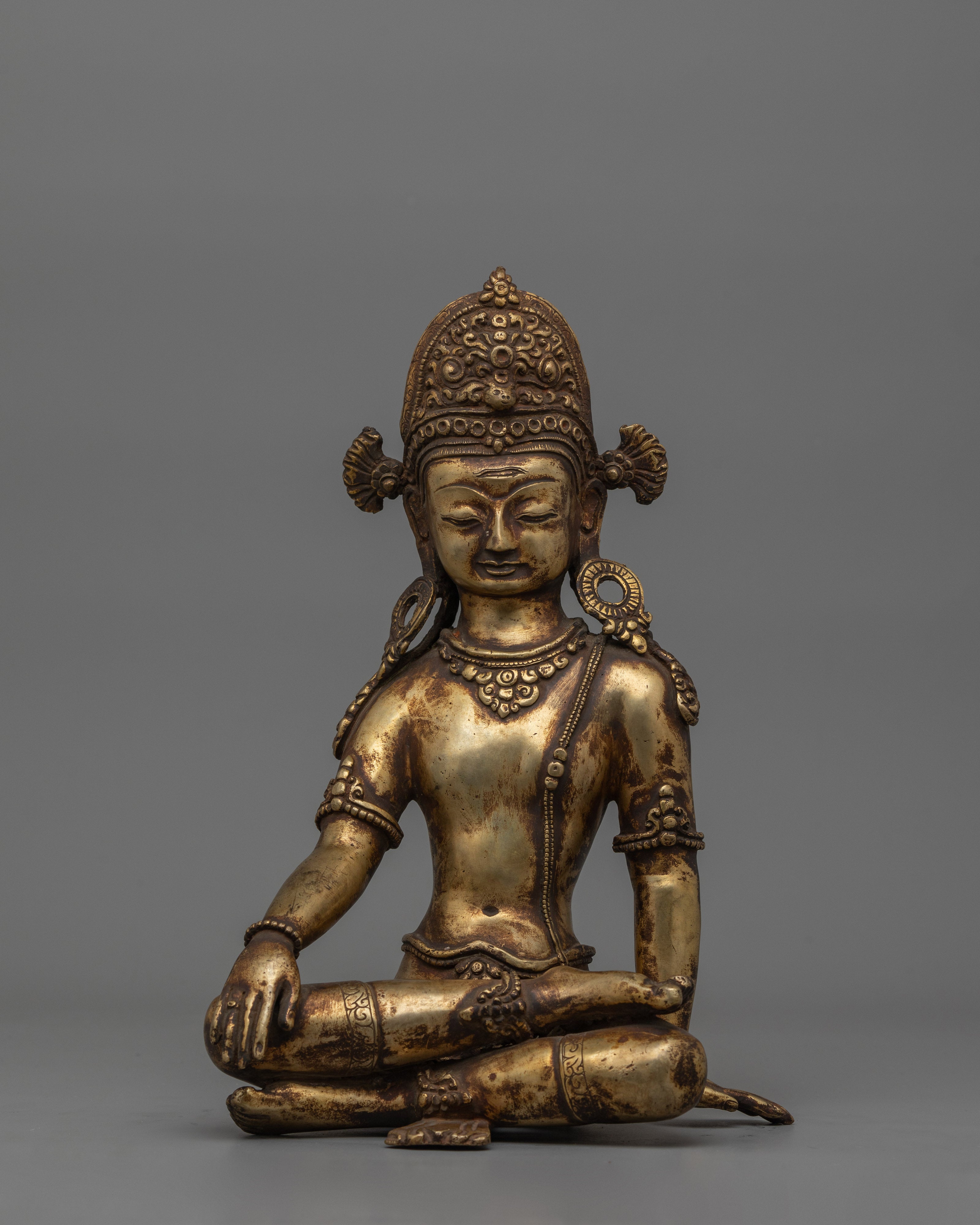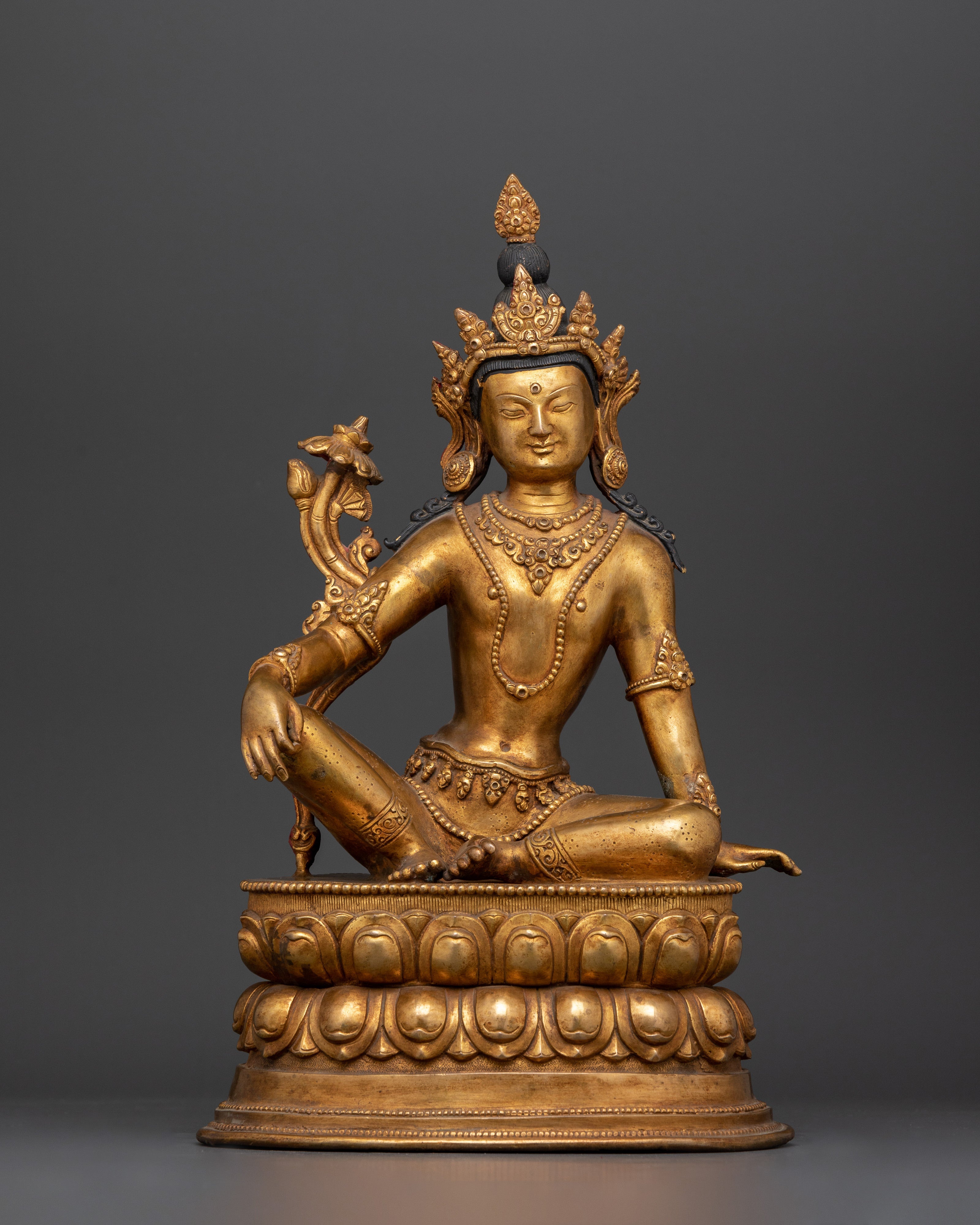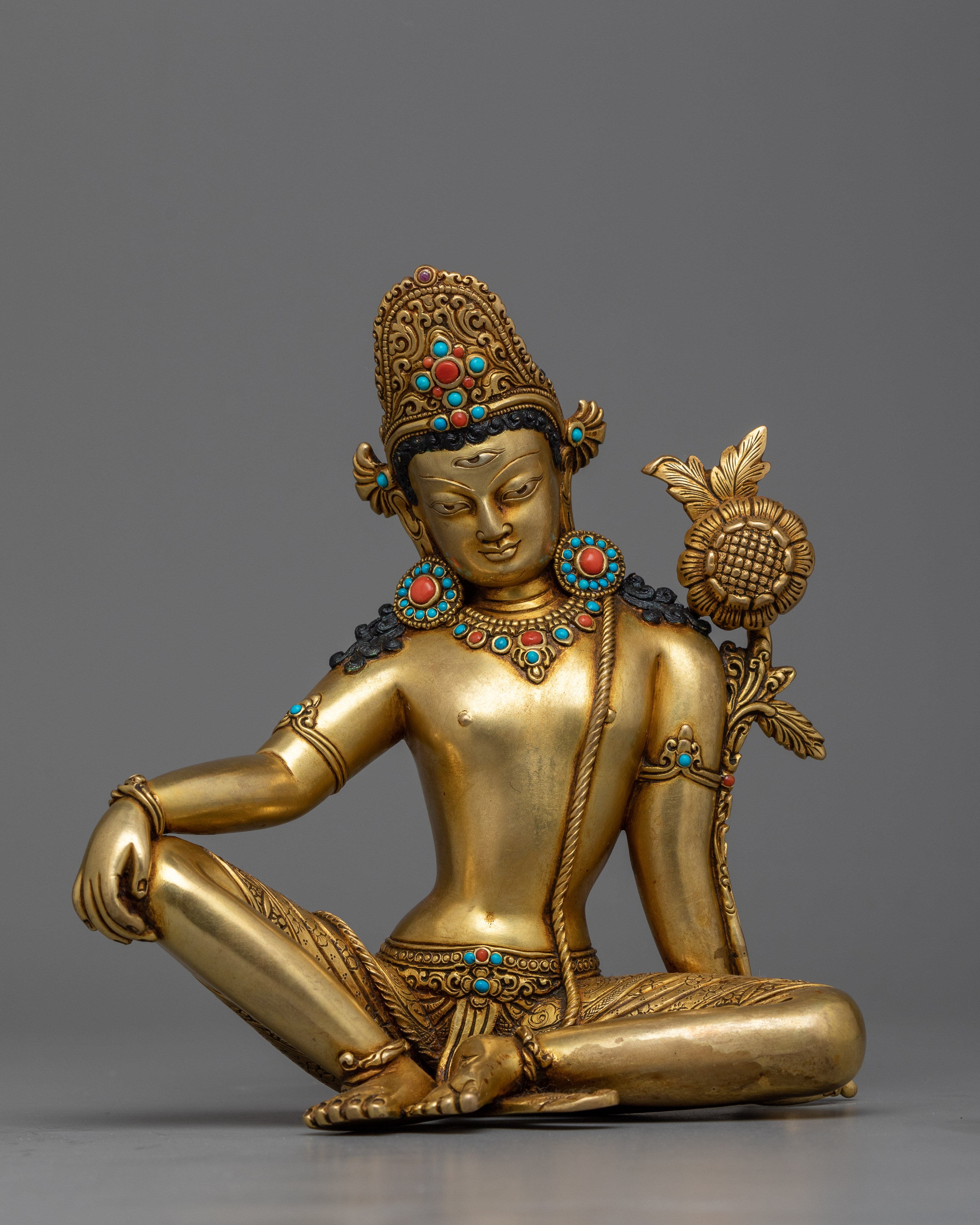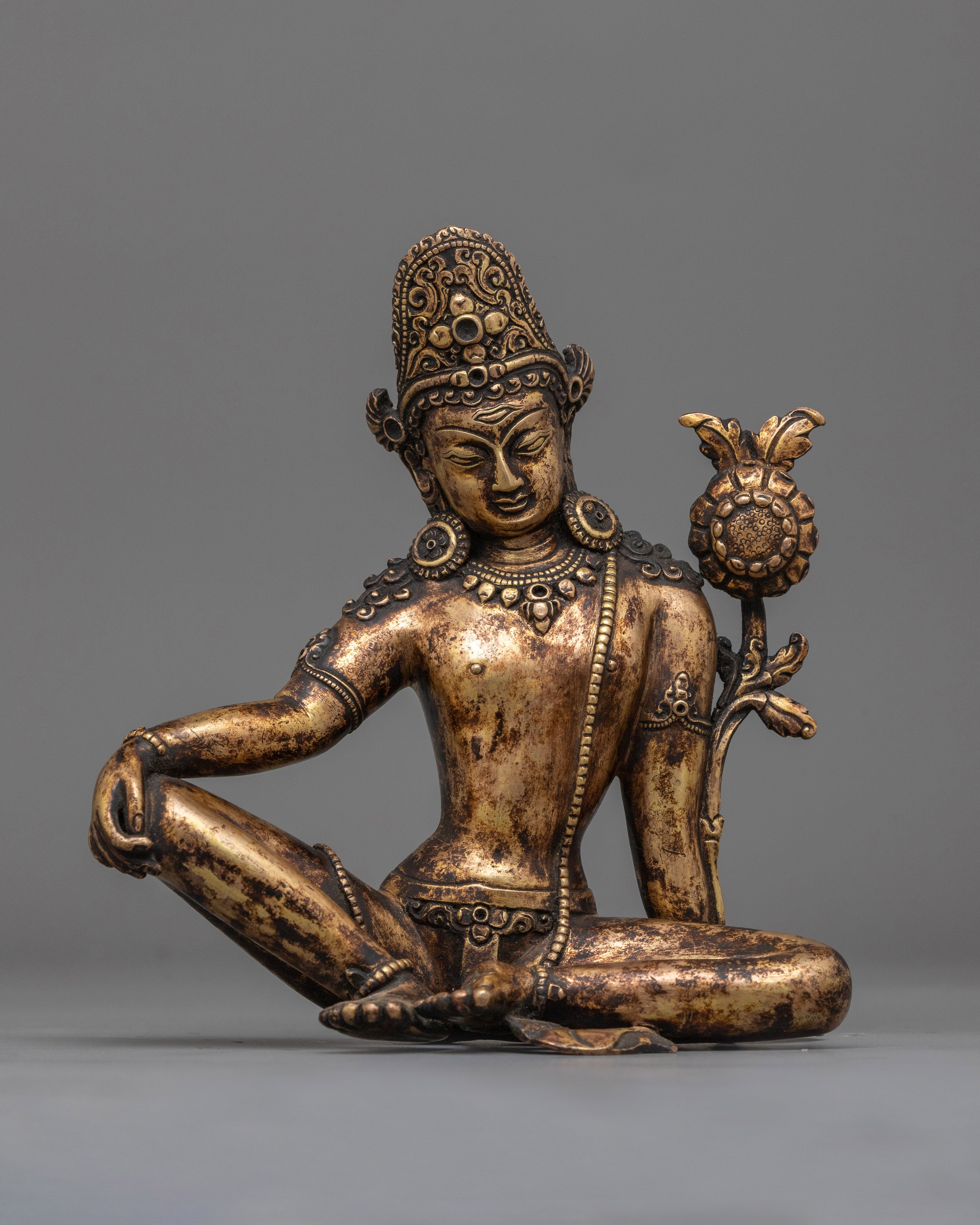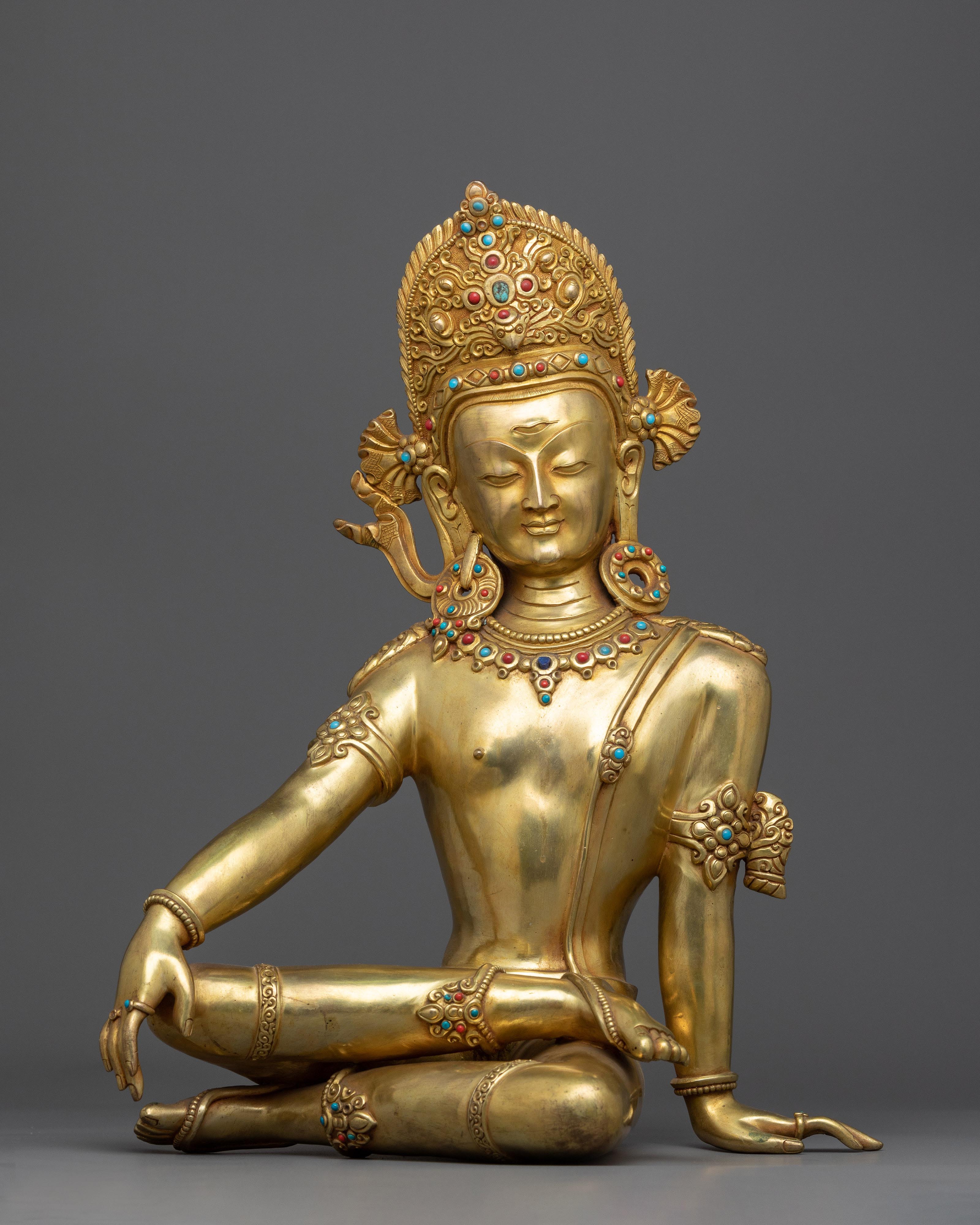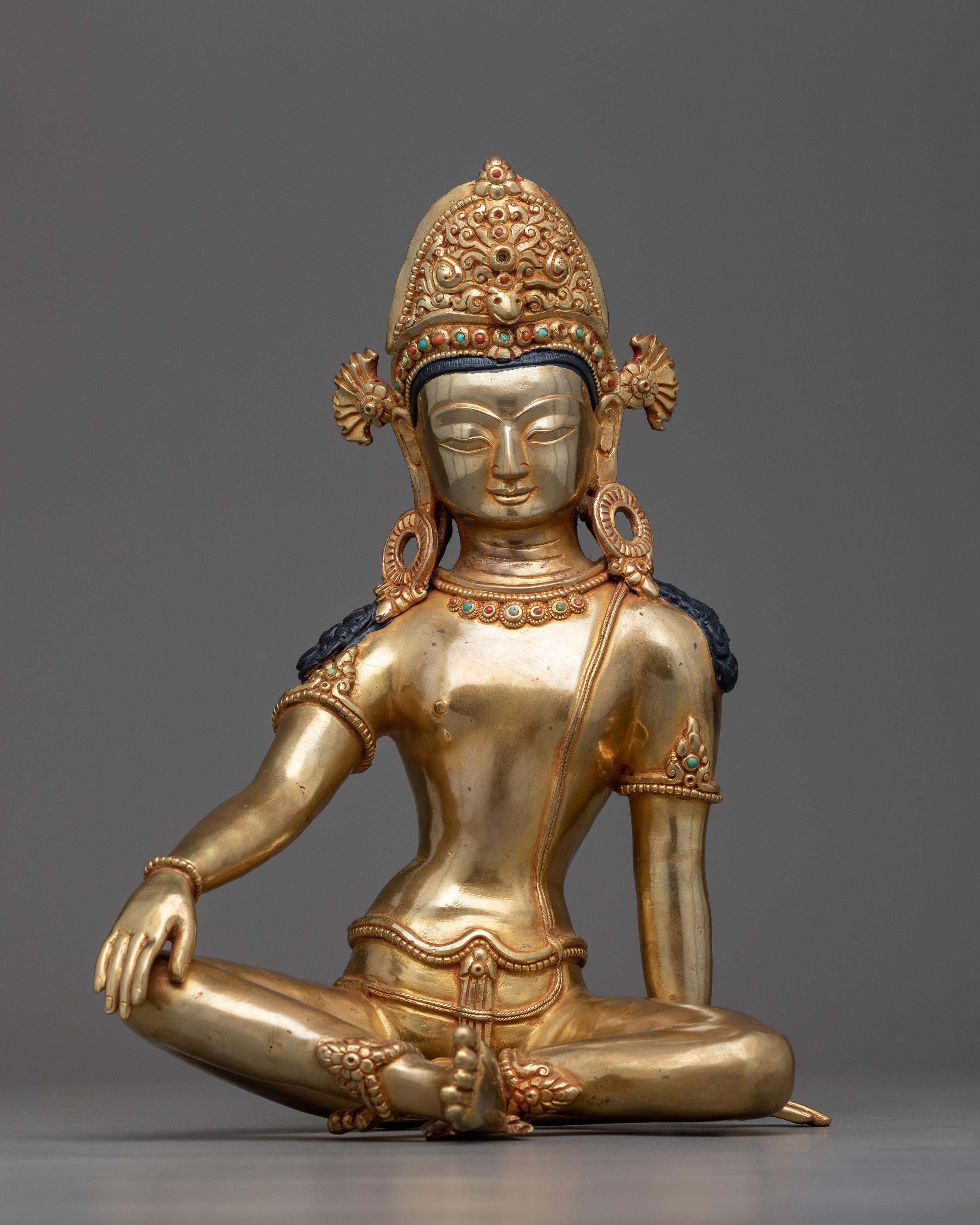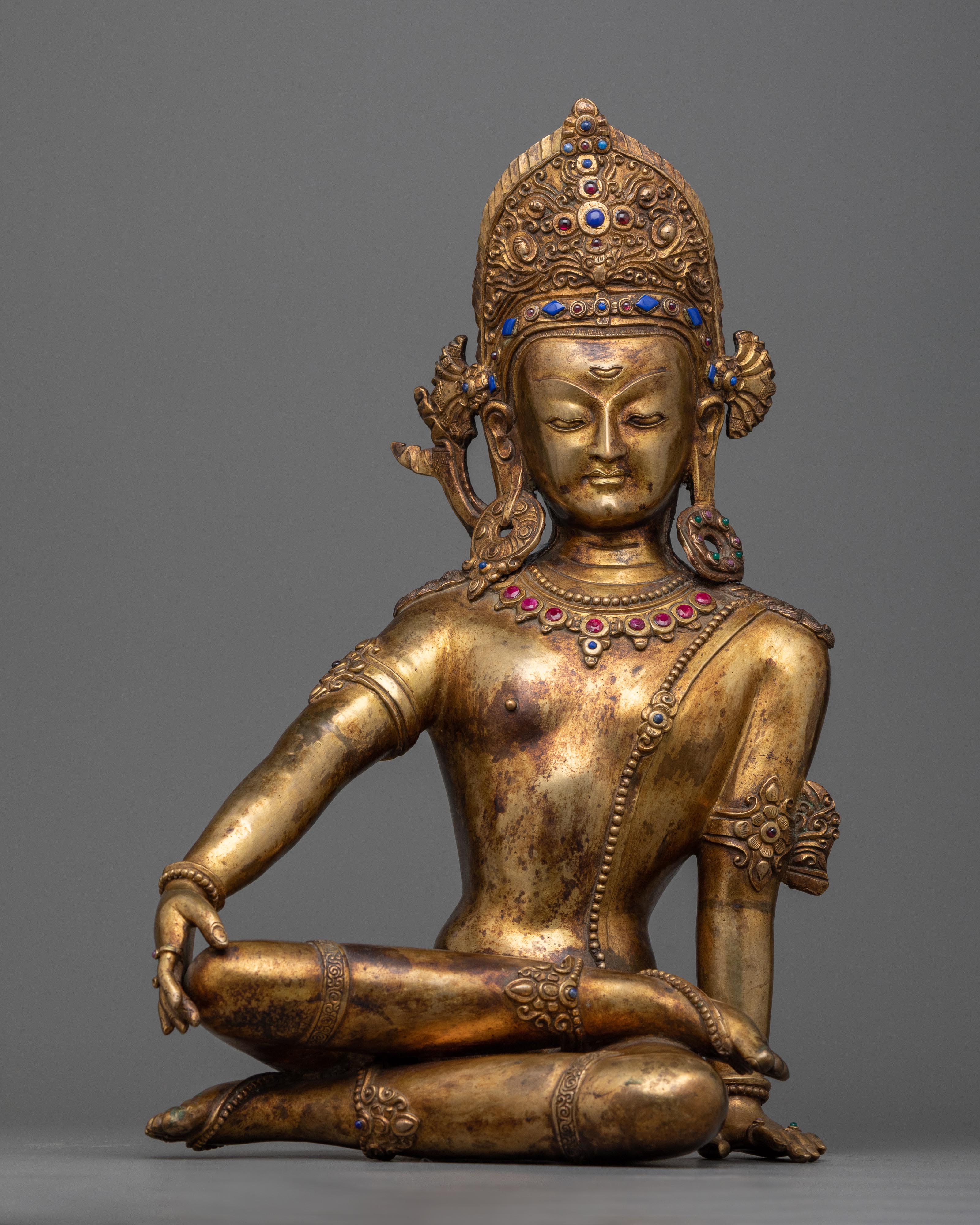Indra
18 products
Showing 1 - 18 of 18 products
Indra: The Heavenly King Who Guards the Dharma
Background and Significance
In the Vedic and Hindu traditions, Indra is regarded as the king of the gods. He has a noteworthy position in Buddhist cosmology and practice as well. However, in Buddhism, Indra is recognized not for his stature as a creator god or supreme deity. Indra is a powerful divine being (deva) and has a key role as a protector of the Dharma and patron to the historical Buddha, Shakyamuni.
In Buddhist literature, Indra is referenced more frequently by his title: Śakra or Śakra Devānām Indra, or "Śakra, lord of the gods." Śakra resides in the Trāyastriṃśa heaven located atop Mount Meru. He inhabits the second of the six heavens of the realm of desire. In this heavenly palace, Śakra observes the actions in the human and lower realms; he offers protection and blessings based on acts of merit and Dharma.
More importantly, Indra is a devoted disciple of the Buddha; he appears in many of the early sutras to ask questions, praise teachings, or even protect practitioners. He is an exemplary lay practitioner; he chooses to use his wealth, power, and influence to support the Dharma and preserve the path to enlightenment for all sentient beings.
Attributes and Iconography
Indra is depicted in Buddhist art and sculpture as a shining dev-king dressed in royal clothing with celestial ornaments, who displays a sense of restrained power and respect. While iconography varies by region, there are several attributes that appear consistently:
-
Crown: A broad, fan-like crown that is exclusively Indra's. It distinguishes him from other celestial beings.
-
Third Eye: Indra's horizontal third eye, located in the middle of his forehead, symbolizes divine perception, the ability to see beyond normal eyesight.
-
Vajra Scepter: Often depicted at the top of a lotus blossom, either right at the left shoulder or held just in his left hand; the vajra, or thunderbolt, symbolizes power, thunder, and divine authority.
-
Stringed Instrument: In Buddhist images, especially in the Wheel of Life images, Indra is sometimes shown playing a stringed instrument. Occasionally, this has led to misidentification by portrayals of Sarasvati.
Unlike angry gods or meditational images, Indra is not an object of deity yoga but a being of the heavens to recognize and respect as a protector, benefactor, and moral exemplifier of the Sanskrit Dharmas as a humble servant with strength.
Associated Stories and Role in Buddhist Scripture
Indra is pervasive in the Buddhist canon from the early Pali suttas to the Mahayana sutras to Tibetan ritual. Indra is seen as a listener and supporter, and as a symbol of the Buddha's teachings even in the case of Indra's collaboration with Anathapindika.
-
The Offering of the Jetavana Monastery: According to the Jetavana Monastery story, Indra invoked his connection with Anathapindika, a rich merchant, and they did work to prepare the Jetavana Grove as a living place for the Buddha. Indra provided the opening paths and waypoints and decorative qualities in the celestial realms to the land ownership in the human realms, allowing Indra to demonstrate how merit affects all realms.
-
The Story of Vepacitti: In a well-known story, Śakra defeated the asura king Vepacitti. He did not defeat Vepacitti through violence. He showed patience and forbearance in the celestial politics and treaty, demonstrating through representation and as a witness Buddhist values. His non-retaliation and single restraint are praised as forms of true strength.
-
The Vimalakirti Sutra: In Mahayana texts, Indra appears in dialogue with advanced lay practitioners and bodhisattvas, where he lectures on non-dual wisdom and compassion. His interactions reveal that even a god might respect a bodhisattva.
In some Vajrayana texts, Indra is envisioned in the mandalas, for example, the mandala of Vajrapani or Akshobhya, as well as being expressed in protective rituals when celestial forces are summoned to protect temples and practitioners from any interference.
Statue Description: A Protector in Divine Form
While statues of Indra are less common than those of Buddha or Bodhisattvas, you can find a statue of Indra or a thangka image of him in traditional Himalayan art, such as some protector shrines or Trāyastriṃśa realm imagery.
-
Heroic Posture and Divine Armor: Indra is portrayed with a noble posture, sometimes standing in a warrior's posture or seated on a throne with his vajra in an authoritative manner. His face is expressive and combines dignity with humility, taking into account the respect the Buddha holds for the king.
-
Celestial Detail: Indra statues often depict him in armors as well, with earrings, crowns, or some very rich details., The vajra he holds is usually double-ended and made with exact tantric geometry.
-
Paired Iconography: In larger settings, Indra is paired with Brahma, like with many celestial beings that protect and honour the Shakyamuni Buddha. Together, they embody wisdom (Brahma) and power (Indra) offered in service to enlightenment.
If Indra is placed in a protector shrine, meditation hall, or a temple corridor, he invites strength but also humility into any area of practice.
Why Choose an Indra Statue?
Indra is not a principal personal deity, but even owning a statue of Indra marks your commitment to Dharma protection, virtuous power, and enlightened kingship. Here's why it makes for good practice.
-
Symbol of Dharma Protection: Indra operates through power to protect truth, justice, and thus is an excellent image to protect a spiritual space or sanctuary.
-
For Moral Inflection for Practitioners: Indra, as a powerful being, bowed down to the Buddha. This encourages wisdom, clear moral standards, and service to the unsuspectingly sacred.
-
Enhances Mandala/Shrine Context: In a large altar setting, Indra can complement the structure of the deities and protectors' cosmology.
-
Aesthetic/Artistic/Cultural Value: Statues of Indra, especially made by Himalayan artists, are some of the most exquisite examples of craftsmanship with spiritual weight.
-
Support for Ritual Purposes: Indra can be used for protector rituals, offerings, or cleansing for new spaces/obstacles removed.
Indra in Buddhism exemplifies using strength for righteousness, power for peace, and stature for service. Indra reminds us that even the gods know the way of Dharma, and that worldly might is best placed to seek spiritual truth.
By bringing home a representation of Indra, you honor the ancient alliance between heavenly power and awakened wisdom and create a connection to practice, protection, and peace.
Let Indra, King of the Trāyastriṃśa Heaven, be your protector, your inspiration, and your quiet supporter in the arc of liberation.


